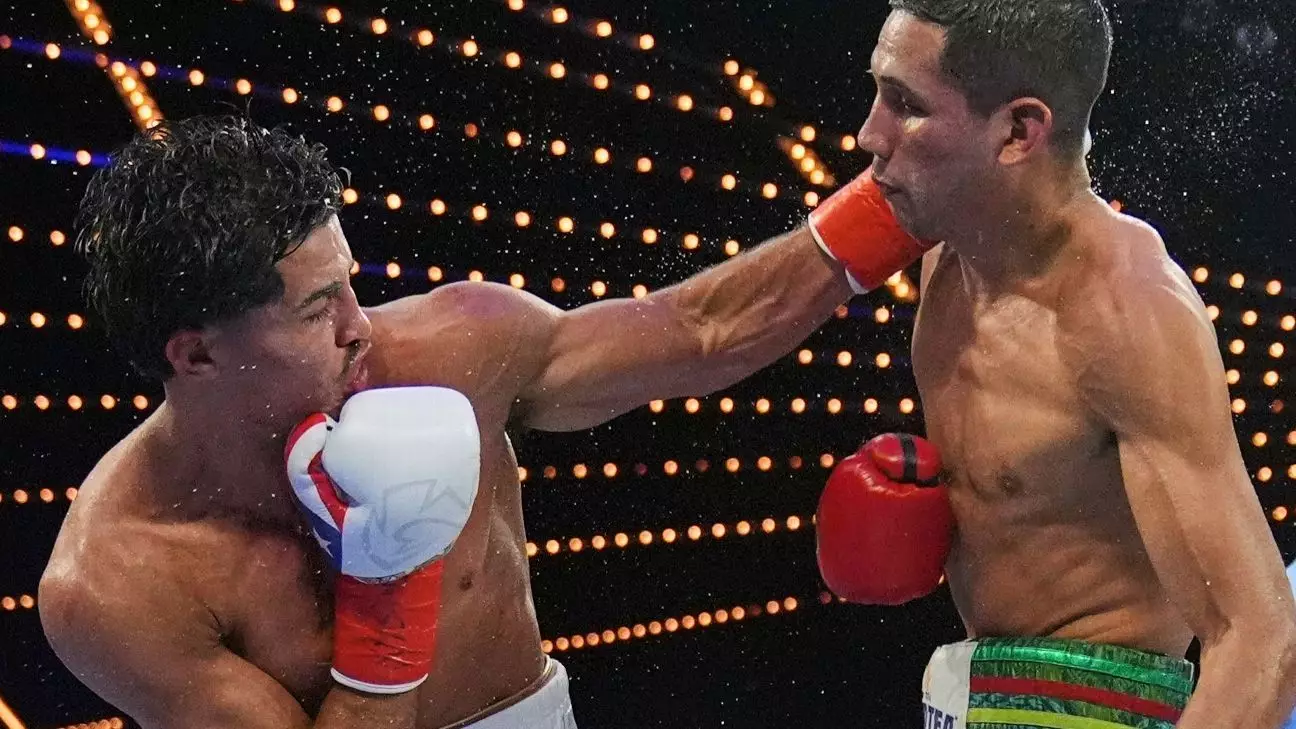In recent years, boxing has perpetually been a sport of seasoned veterans, tested through years of grit and experience. Yet, the emergence of young champions like Xander Zayas throws a compelling narrative into stark relief: the sport is shifting, and its future seems to be steering toward youthful dominance. Zayas, at barely 22, has defied the skepticism surrounding novice champions with a remarkable display of skill, integrity, and resilience. His victory at Madison Square Garden was not merely a win; it was a statement—one that underscores a fundamental truth: talent, when paired with relentless determination, can elevate even the youngest in the sport to the highest echelons almost overnight.
However, this ascendancy raises questions about the sustainability and depth of the sport’s competitive landscape. Are these young champions truly the future, or are they, in a sense, a fragile illusion—a creation of media hype, rapid matchmaking, and the modern tendency to elevate promising talent before they face serious adversity? The boxing world needs to critically assess whether the emphasis on youth champions augurs a genuinely healthy sport or a risky gamble that may invite hollow glory, leaving behind the hardened foundations built over decades.
The Interplay of Skill and Spectacle
Zayas’s victory was as much a testament to strategic mastery as it was to physical prowess. The Puerto Rican prodigy demonstrated masterful footwork, superior timing, and a composed mental state—traits that often are seen in fighters with far more experience. His ability to dictate the tempo and keep Garcia Perez on the back foot reveals a fighter with the kind of boxing IQ that can serve as a model for future generations. His technical finesse stood in stark contrast to some of the more raw and awkward style of his opponent, yet it was this controlled precision that redefined what it means to be a young champion: not a reckless upstart, but an athlete with discernible mastery over his craft.
Yet, while Zayas’s display was undeniably impressive, it must be critiqued within the context of a landscape that often favors spectacle over substance. The sport has increasingly turned into a ratings-driven spectacle, where the narrative of young talent ascending rapidly to the top is captivating, but often risks quality over depth. Are we witnessing genuine talent maturing under hard-tested conditions, or are we advising a pathway that rushes talent to the limelight before they are truly ready for the tough, unpredictable realities of world-level competition?
The Illusions of Promising Futures
Another point of concern lies in the risks associated with hyping youthful champions before they face the exponential challenges of seasoned adversaries. Youth is an asset, yes, but it can also be a vulnerability masked behind a shiny veneer of attractiveness. Zayas, although victorious, still must contend with the brutal unpredictability of the sport, which tends to expose even the most promising talents when they are least prepared.
The same can be said for many of the emerging fighters—like Bruce Carrington and Emilio Vargas—whose rapid rise feeds into a narrative of a new generation taking the sport by storm. Yet, the question remains: how long can this momentum be sustained without risking the integrity of the sport? When fleeting moments of brilliance overshadow substance, the sport jeopardizes its credibility. It becomes essential that the boxing community, fans, and promoters critically examine whether this youthful influx serves the health of the sport or merely its superficial glamour.
Furthermore, the current trend of quick-fire ascents can obscure the importance of veteran knowledge and seasoned resilience. Boxing is, at its core, a brutal, humbling sport where experience often outshines raw talent. If the sport continuous to prioritize spectacle over substance, it runs the risk of creating champions whose reigns are as fleeting as their hype, leaving behind a legacy built more on marketing than on mastery.
The Future of Boxing: Promise or Peril?
The real challenge lies in balancing the excitement of new blood with the wisdom of experience. The rise of youthful champions like Zayas injects much-needed vitality into boxing, promising fresh rivalries, dramatic narratives, and renewed public interest. However, this should not be an excuse to dilute standards or to bypass the grueling test of adversity that truly defines greatness.
Boxing’s center of gravity must remain rooted in fostering fighters who combine skill, resilience, and integrity—qualities that transcend hype and fleeting success. While it is exhilarating to see young fighters reach the pinnacle, the true test will be whether they can sustain their performance amidst the grinding realities of the sport, or if they will be consumed by the fleeting spectacle that modern boxing so often promotes.
The sport’s future depends not just on who holds the belts today, but on whether boxing can develop fighters capable of enduring the trials of true greatness, regardless of age. If youth is allowed to flourish with discipline and mentorship, the sport can thrive. Otherwise, it risks becoming a fleeting glamour show—glorious in the moment, but ultimately fragile and forgettable in the long run.


Leave a Reply